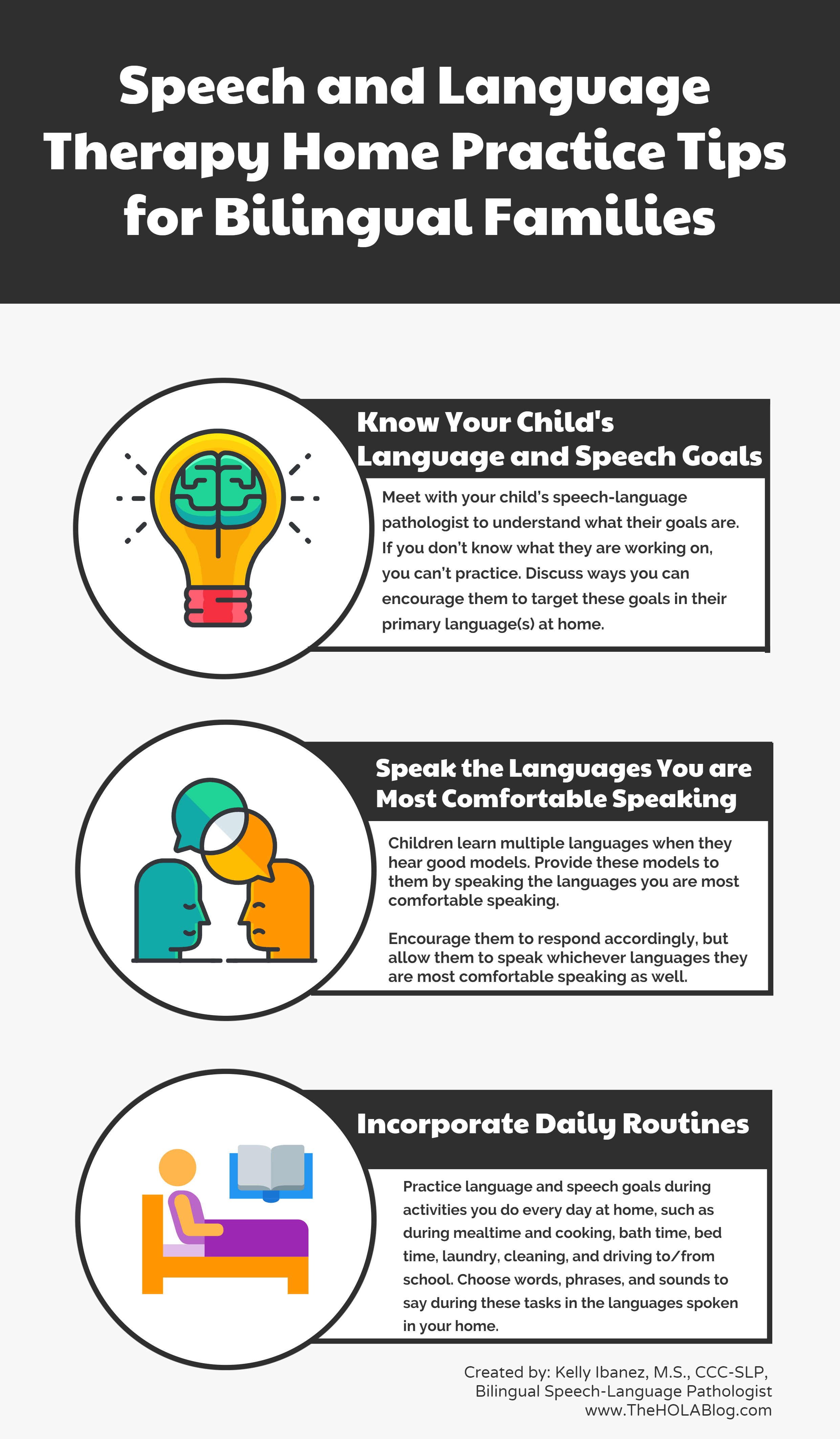Parents of children who receive speech and language therapy are often curious about how they can help their children meet their goals. This becomes an even more complicated question for parents who are raising their children in a bilingual home. As a bilingual speech language pathologist, I recommend the following home practice tips for parents of bilingual children who receive speech and language therapy:
- Know your child’s speech and language goals.
- Meet with your child’s speech-language pathologist to understand what their goals are. If you don’t know what they are working on, you can’t practice. Your child may have goals for language, articulation (producing sounds), fluency (stuttering), voice, swallowing and feeding, social skills, or alternative forms of communication (using pictures, devices, sign language, etc.).
- Speak the language you are most comfortable speaking.
- Children learn multiple languages when they hear good models. Keep in mind your child’s goals and see how you can practice them in the language you are most comfortable speaking by choosing sounds, words, or phrases that are common in both languages. For example, if your child has a speech goal of producing the /g/ sound, think of words you could practice in your native language that have that sound in them. Discuss this with your child’s speech-language pathologist if you are uncertain about how to do this or want clarification.
- Incorporate daily routines as a part of your child’s home practice.
- The best way to practice your child’s language and speech goals is to have them practice during activities they do every day at home. Encourage them to speak to you in the language you are most comfortable speaking, but allow them to speak whichever languages they are most comfortable speaking as well. Some common home routines and examples of ways your child can practice their speech and language goals include:
- Mealtime and Cooking
- Have your child request foods and drinks during mealtime and discuss smells, flavors, and textures while eating and cooking.
- Bath Time and Brushing Teeth
- Your child can say 10 words or phrases before they brush their teeth, and 10 words or phrases after to practice their speech sounds.
- Bed Time
- Read or tell a story to your child in the language you are most comfortable speaking; have your child talk about the things they enjoyed about their day or things they are excited about the following day; have your child say 10 words before they fall asleep.
- Laundry and Cleaning
- Assign your child to sort laundry items by categories: all of the items of the same color together, all types of clothing together, etc. and have them describe the items in either language.
- Driving to/from School
- Practice reading a list of words.
- Play “I spy” by having your child describe an item they see without telling you what it is.
- Describe items they see as they drive to/from school using whichever language they prefer, and speak back to them in the language you prefer.
- Mealtime and Cooking
- The best way to practice your child’s language and speech goals is to have them practice during activities they do every day at home. Encourage them to speak to you in the language you are most comfortable speaking, but allow them to speak whichever languages they are most comfortable speaking as well. Some common home routines and examples of ways your child can practice their speech and language goals include:
Most importantly, do not feel discouraged! Any little bit of practice will help your child to meet their language and speech goals.
Kelly Ibanez, M.S., CCC-SLP
Bilingual Speech-Language Pathologist



